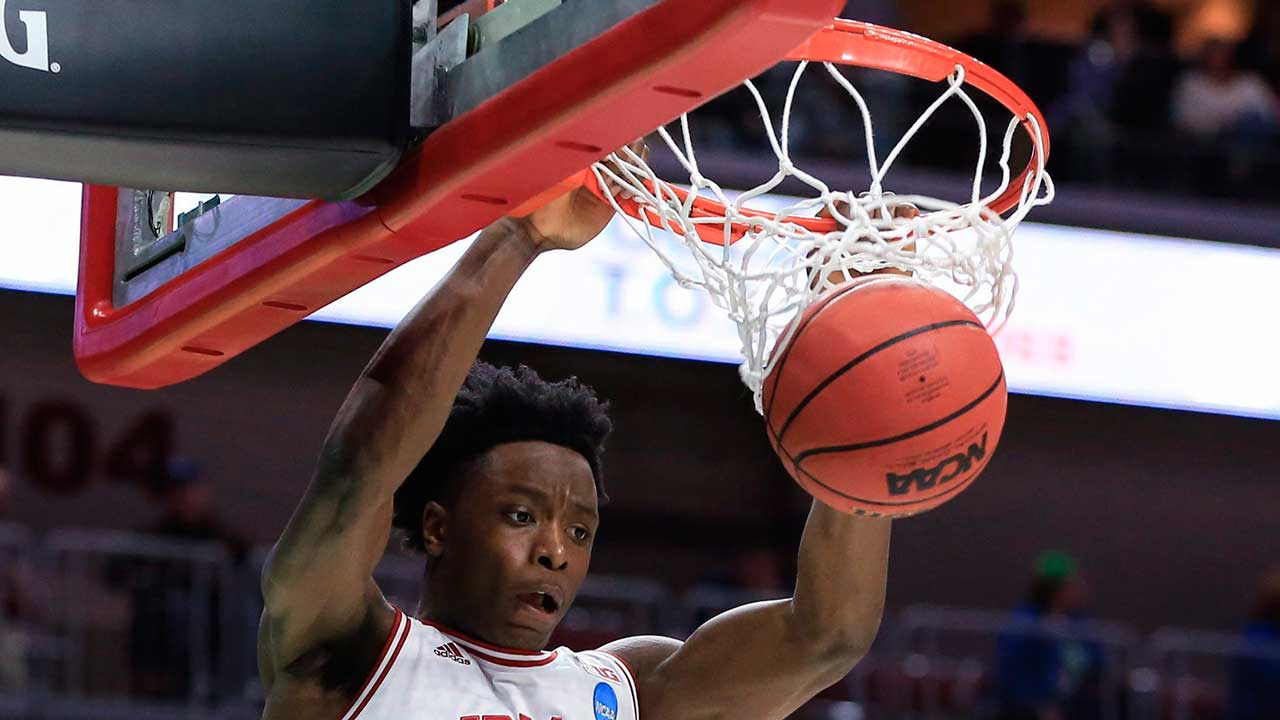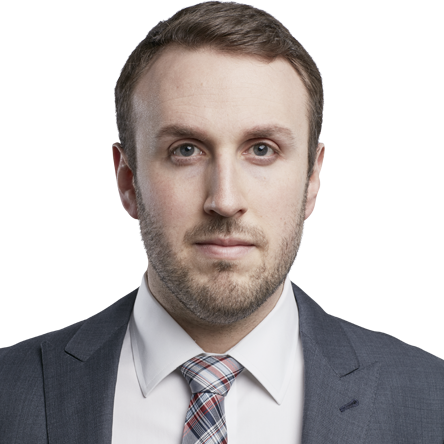This April, when Toronto Raptors rookie OG Anunoby first met with Andy Barr to rehab his surgically repaired knee, there was one pressing question on his mind.
“He’d always ask me, ‘When can I dunk? When can I dunk?’” says Barr, a Doctor of Physical Therapy who founded Innovate Performance in Los Angeles. “And I’d have to go, ‘You can’t dunk yet. Just chill out. We know you can dunk.’ And he’d go, ‘but what if I can’t dunk?’ And I’d shake my head and say, ‘you can dunk. Don’t worry about dunking. That’s the last thing you need to worry about.’”
After tearing the ACL in his right knee during a game this January — just five months prior to the NBA Draft — Anunoby went searching for a physical therapist who could help him get back up to speed for NBA training camps in September.
After speaking to a series of specialists around the United States, Anunoby selected Barr, whose physiotherapy resume includes stops with the English Premier League’s Southampton F.C. and Manchester City F.C., as well as a stint with the New York Knicks.
While dunking as viscously as he did with Indiana University prior to the injury was one of Anunoby’s primary concerns, Barr’s plans for the then-19-year-old proved a bit more complex.
“The type of rehab that I do, it’s not just focusing on the joint itself. It’s a holistic, whole body movement approach,” Barr says. “It’s about looking at basketball as the frame of reference and referring to basketball as the point we return to. Building back to understanding the game, understanding the movements and the tasks that are involved in basketball. And understanding what the risk factors are for reoccurrence, and reassuring that we tick all the boxes through that process so he returns stronger than before.”
[snippet id=3636937]
When Barr got his first look at Anunoby about three months after his surgery, he was impressed with how much progress had already been made. Anunoby’s repaired ligament was strong, he didn’t have any swelling in his joints, and he already had full range of motion with his knee, thanks to the daily work he was doing with Indiana’s rehab team prior to the end of the school year.
“My first thought was, ‘There’s going to be no issues with this,’” Barr says. “I never had any worries — no concerns. Our job was just getting him stronger and working on the movements that he needed from a basketball perspective — refining the movement patterns necessary. Things like lunges, squats, drop step, side step, before progressing to more dynamic stuff like jumping, landing and running.”
Anunoby worked with Barr almost daily from April through early August, taking brief, intermittent breaks to fly off for pre-draft interviews, and eventually the draft itself, before returning to Los Angeles to resume training.
A typical day started with an hour of early morning shooting. Anunoby was working with then private shooting coach (and current New Orleans Pelicans assistant) Mike Penberthy at the time, refining his form and improving his mechanics.
Then he’d meet with Barr and go through at least 90 minutes of rehab work, including manual therapy and strength training that targeted the area around his knee. This work was different every day — but loaded, single-leg lifts were a constant, as were isometric exercises which involve activating the body’s muscles without actually moving them. (Think planks and wall sits.)
Next, Anunoby worked through an hour-long, full-body workout that targeted all of his muscle groups, helping him maintain — and improve — his strength and power while he was unable to take the court.
[pullquote]
“He’s one of the most explosive athletes I’ve worked with but he’s also very focused and intelligent.”
[/pullquote]
He’d finish his day with conditioning, at first either in the pool or on the bike, and eventually on an Ultra G treadmill once he had doctor’s clearance to begin running. In all, Anunoby trained 4-5 hours a day through spring and most of summer.
“They were long, hard days,” Anunoby says. “It wasn’t just a knee rehab. We were working on my upper body, core, glutes — just working out my whole body. We worked on everything.”
No two days were the same. And as they spent more time together, Barr quickly realized his biggest challenge with Anunoby wouldn’t be motivating him to grind it out, but encouraging him to rest.
“He just wanted to work, work, work. Which is great — that’s the sign of a great athlete,” Barr says. “But sometimes he would get a little bit tired and try to push through it too much, and I’d have to say, ‘No, no, today we’re just taking it easy. It’s okay to have recovery. You need to have your recovery.’ Sometimes, young athletes don’t appreciate the recovery aspect is just as important as the work aspect.”
After four months working with Barr, Anunoby left Los Angeles in August to join Toronto’s Summer League team in Las Vegas. From there, he went to Burnaby, B.C., for three weeks to finish his rehab with Barr’s close friend Alex McKechnie, who also happens to be the Raptors’ director of sports science.
They trained for five hours a day, putting the final preparations in place that allowed Anunoby to surprise everyone and play in a Raptors intrasquad scrimmage early in training camp, his first live basketball in eight months.

Until Anunoby appeared in that scrimmage, there was extensive and ultimately inaccurate speculation as to how long he’d be out. Some reports had him sidelined until 2018. But as Anunoby continued making strides, he left little doubt that he’d be ready for the start of the regular season.
“We just looked at whether he was capable of achieving the things he needed to achieve from a functional and physical perspective — and everything was looking excellent,” Barr says. “He really did everything he could, everything that was necessary for his recovery. And working with Alex, it doesn’t get any better than that from a rehab perspective.”
Once he returned to action, the Raptors built up Anunoby’s workload gradually. They kept him on a minutes restriction early in the season, and were particularly mindful of his body’s adjustment to the rigours of NBA basketball.
The NBA’s lifestyle realities off the court were also a consideration. The Raptors started the season with an exceptionally heavy travel schedule (Toronto played 12 of its first 19 games on the road), which made proper sleep a challenge.
“When an athlete returns from something like this, incremental, gradual build up is the key,” Barr says. “Avoiding fatigue. Making sure he’s recovering efficiently. Staying on top of things like sleep and nutrition. Making sure that when he’s tired he lets people know and he gets a fully recovery. It’s really important that you’re smart about all of that.”
[snippet id=3360195]
Now that Anunoby’s 10 months removed from surgery — Barr says the risk of re-injury reduces dramatically after nine months of recovery — the reins are starting to come off. During a four-games-in-six-nights stretch in mid-November, Anunoby averaged more than 23 minutes per game, including a pair of games when he was on the floor for nearly 30.
He still has to stay on top of his risk-reduction exercises, maintaining the strength and conditioning he built around his knee and throughout his entire body over the off-season. But with no setbacks to speak of, there’s nothing to stop Anunoby’s workload from continuing to grow. He says he’s not where he wants to be physically just yet, but that he feels stronger and more explosive with each passing game.
“It’s a testament to what a hard worker he is — he was very motivated to do everything he could,” Barr says. “He’s one of the most explosive athletes I’ve worked with — but he’s also very focused and intelligent. He asked a lot of great questions at the time as to why he was doing certain things and what the benefit was.”
Of course, one of the questions Anunoby kept coming back to was the one he asked Barr when they first began working together this April: ‘When can I dunk?’ Anunoby finally received clearance to do just that when he was working out in Burnaby with McKechnie late in his rehab. He made sure to film the feat and immediately texted it to Barr.
“He goes, ‘Look, look,” Barr says with a laugh, “I told you I can dunk.’”
[relatedlinks]








